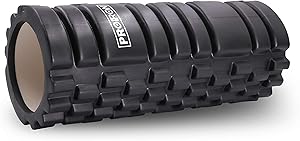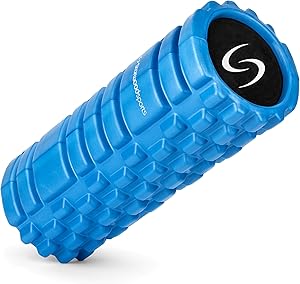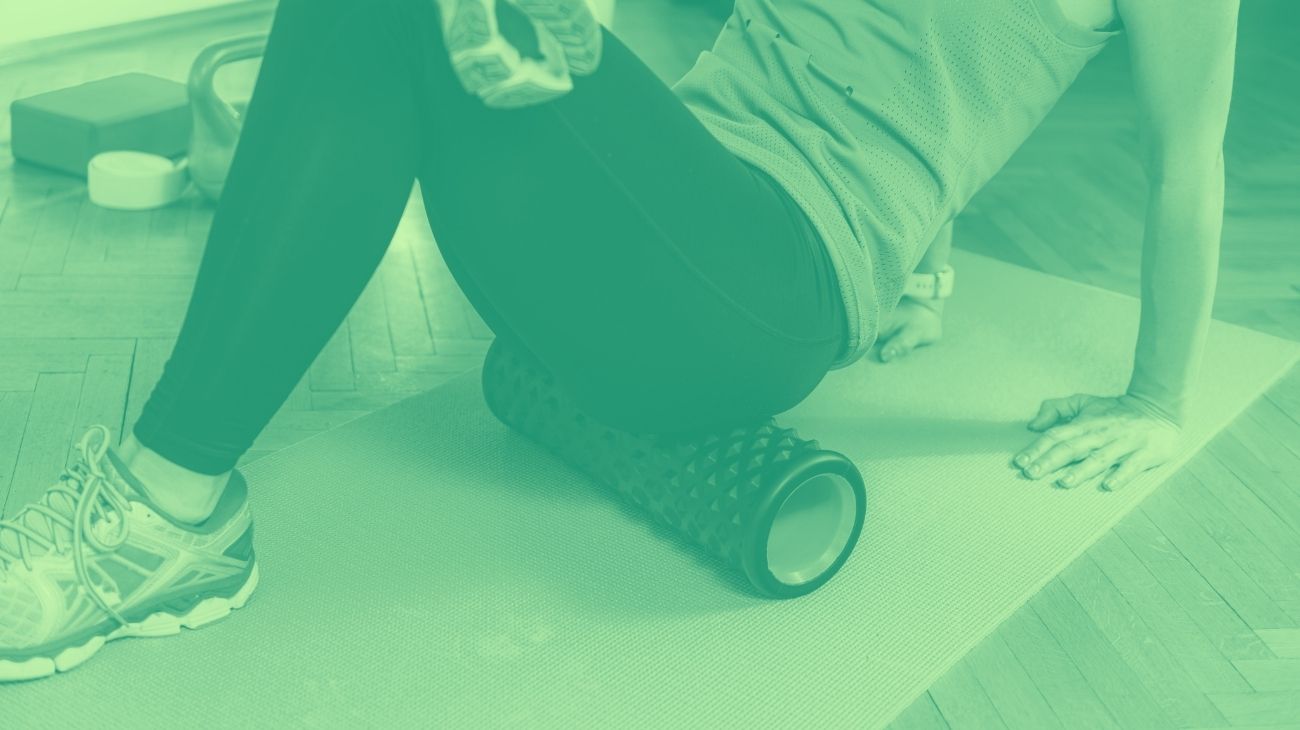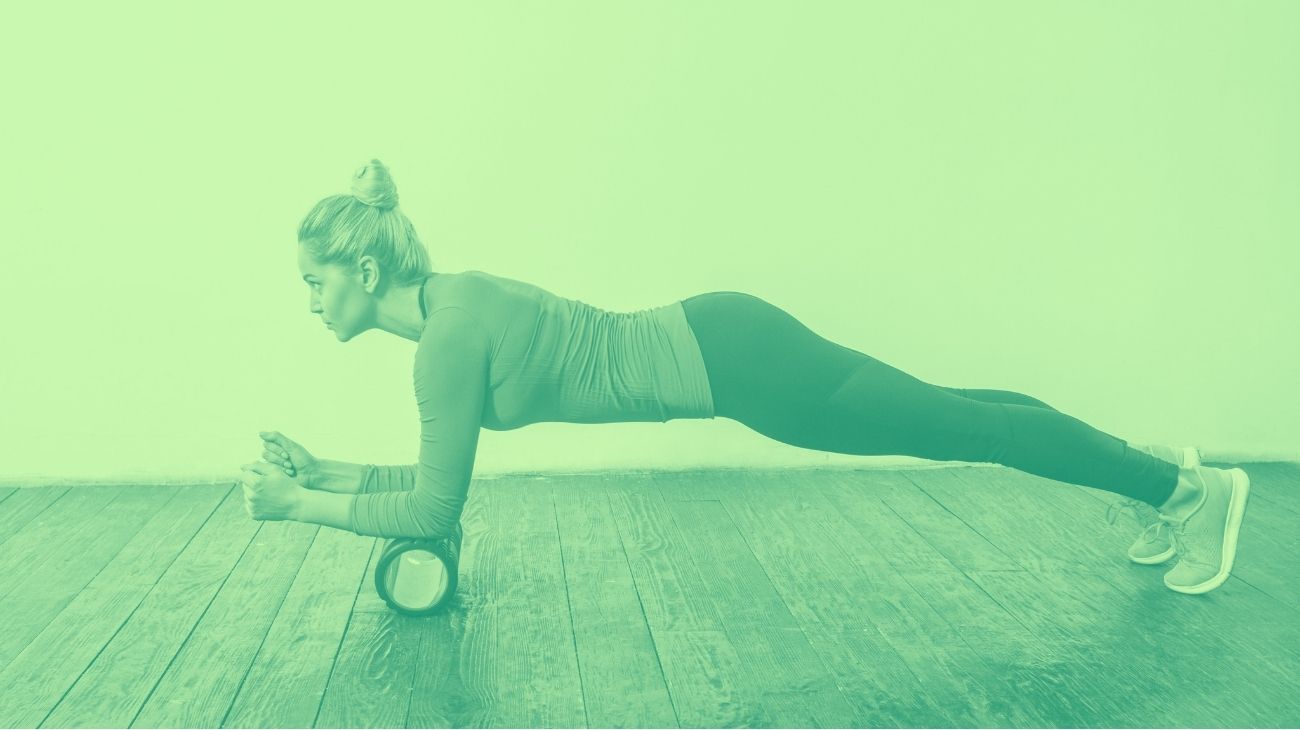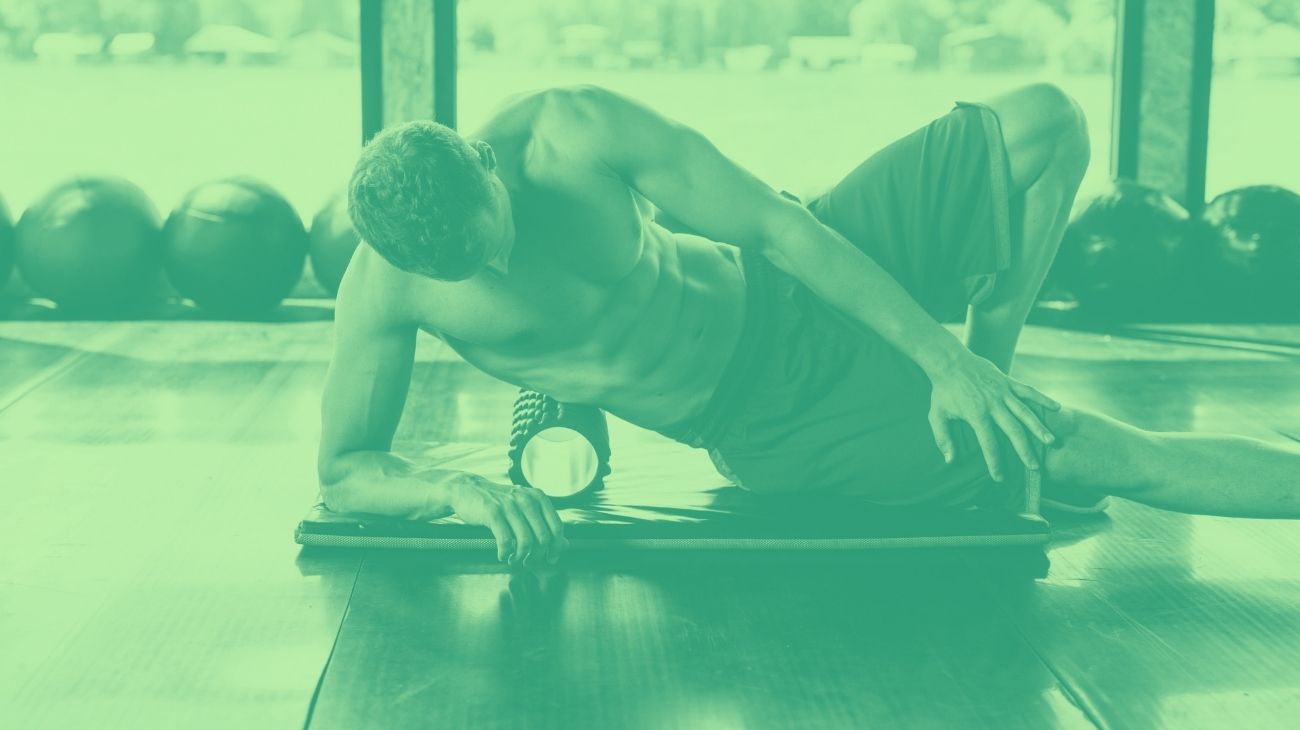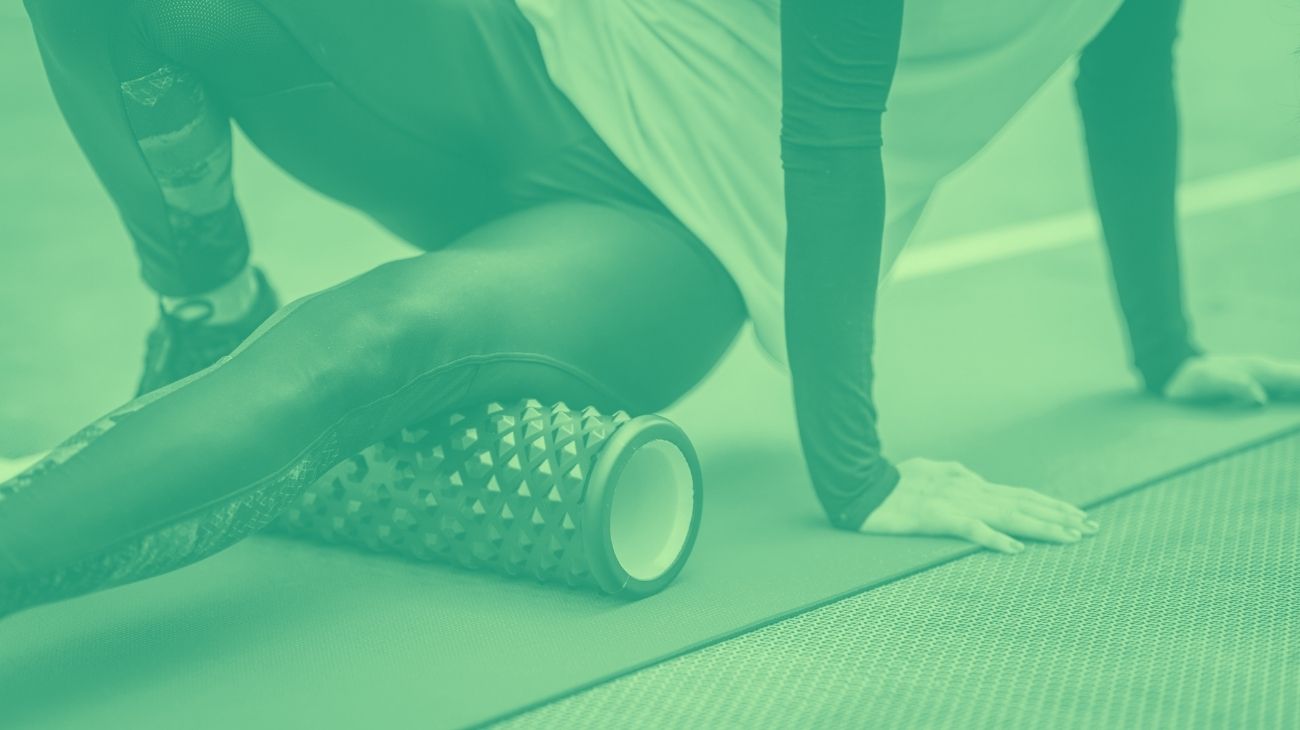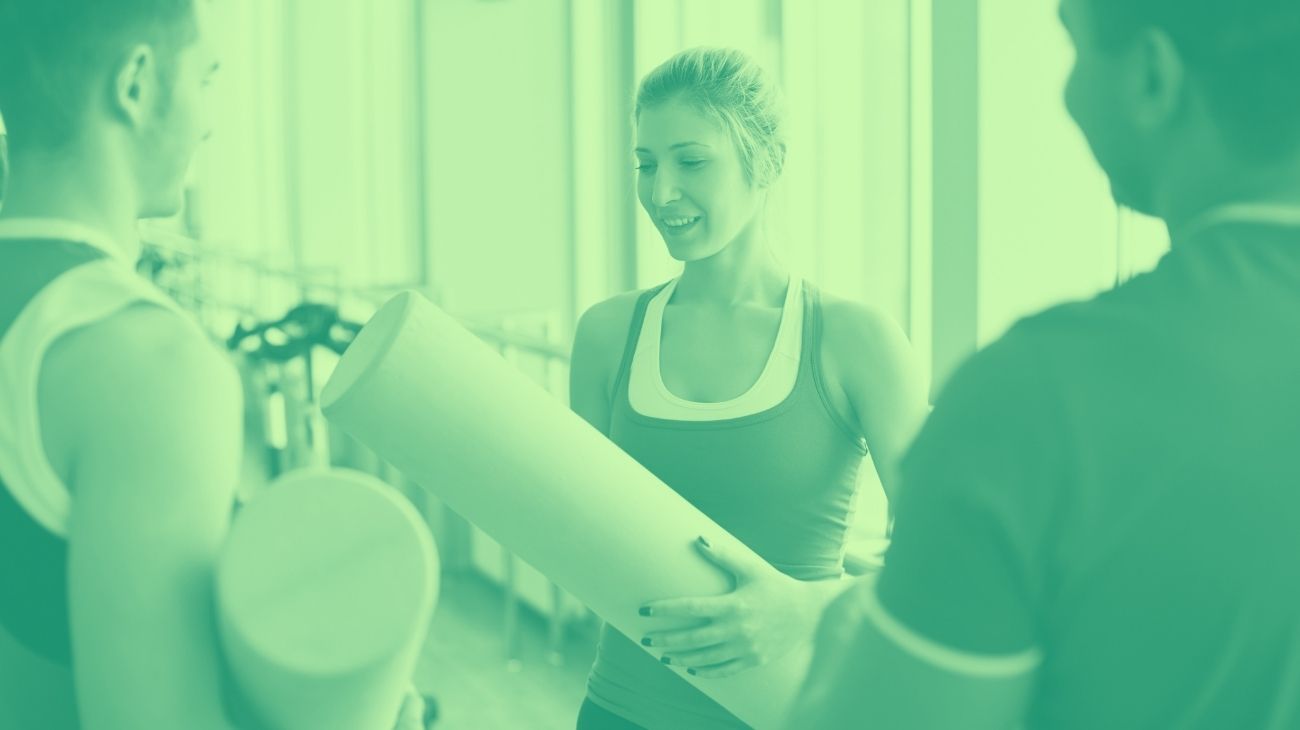- What is the best foam rollers for trigger points?
- Video: How to use Foam Roller?
- The types of foam rollers for muscle massage you should know about
- What are trigger points and what causes them?
- What are the advantages of using the foam roller to trigger points?
- How do you relieve trigger points using the foam roller?
Muscle pain is a real problem when it becomes chronic. Not only because it is annoying to suffer from, but also because there is often no known cause or apparent reason for it. When this happens, you may be suffering from a myofascial trigger point.
Myofascial trigger points are areas of tension located deep within muscle tissue that cause pain. Fortunately, with the help of a foam roller, it is possible to release these tension points and avoid the pain associated with them.
What is the best foam rollers for trigger points?
- Wide range of colours to choose from
- Provides a deep massage with less effort
- Too intense for some people
It is designed to be used by both men and women. Each of the contact tips adapts perfectly to the patient's back and any other soft tissue that needs to eliminate the toxins lodged in them. Find a relaxed area and roll the roller over the tight muscles for 5 to 10 minutes, keeping in mind that the pressure should be constant. For some novice users the density of the foam may cause pain.
- Size: 33 x 13,5cm
- Material: EVA foam
- Colours: Black, Purple, Red, Green
- Weight: 950gr - 2,09lbs
- Pack: Roller
- Three different surface textures
- Different colours
- Texture designed to stimulate blood flow
- Very robust construction
- Too intense for some people
- Heavier than most
The contact tips are designed to act directly on the hamstrings, flexors and any other tissues that need to be constantly reattached. This makes it a safe and versatile product, because it adapts precisely to any rigid muscle. The diameter of the ethylene vinyl acetate roller can be large for application to the spine and lower back.
- Size: 40,6 x 17,8 x 6,6cm
- Material: Foam
- Colours: Orange, Black
- Weight: 680gr - 1,50lbs
- Pack: Roller, exercise manual and carry bag
- Lightweight and easy to carry
- Perfect balance of softness and firmness
- No material specified
It can be used by high performance athletes and by anyone who wishes to reduce stress levels. It has a strap with which you can turn the roller into a flat mat, which will be useful both for use on your feet and to save space in your backpack when you carry it around. The multi-level bearings are made of good quality materials, although in some cases their durability and performance is poor.
- Size: 33 x 14cm
- Material: EVA rubber
- Colours: Orange, Black, Purple, Purple, Pink, Green
- Weight: Not specified
- Pack: Roller with exercise manual
- Three different surface textures
- Includes exercise manual
- Easy to clean
- Offers a good rolling experience
- Does not specify weight
- Some people prefer a firmer roller
The distribution of its tips generates the ideal pressure and allows the rubbing to achieve instant pain relief. It can be used by athletes, but also by people who need to relax the cervical area after a long day at work. The one-size-fits-all design allows adults and children to easily benefit from this roller. Its light weight makes it easy to carry, but be aware that its hardness may be too much for people with a sedentary lifestyle.
- Size: 33 x 14cm
- Material: EVA foam
- Colours: Blue, Black
- Weight: Not specified
- Pack: Roller with exercise E-book
- Provides a deep massage with less effort
- Includes exercise E-book
- Capable of working large muscle groups
- Texture designed to stimulate blood flow
- Does not specify weight
- Users report that it is gentle
The most demanding athletes differentiate themselves from their competitors, thanks to the daily use of the roller. Its development technology, the undulation of the roller and the quality of the foam make this product an ideal massager to minimise the risk of injury. To use it, you will have to rub directly on the area, but be aware that this action could lead to a build-up of toxic substances in the muscles.
HCFGS - Fitness Foam Roller for Deep Tissue Muscle Massage Roller, Yoga, Pilates and Relax Muscles
- Easy to use
- Very sturdy construction
- Perfect balance of softness and firmness
- Ideal for trigger point therapy
- Some people prefer a firmer roller
- Several users report durability problems
Its design is ideal to be applied in yoga, pilates and any other sport where the muscular structure needs to be demanded to the maximum. It is a 3 in 1 massager because you can choose the level of stiffness to simulate the hands of a professional masseur. It is made of premium material, but be aware that in some cases it may be a little uncomfortable for beginner users who want to relieve their back pain.
- Easy to clean
- Offers a smooth rolling experience
- Different models
- Easy to use
- Little 3D texture
- No weight specification
It is possible to combat inflammations due to fluid accumulation or joint malfunction, you just have to pass its ethylene vinyl acetate material over the affected area until you feel an internal heat . After a few minutes you will see how the stretching of your muscles will improve and the strengthening of the fibres will eliminate the toxins lodged in them. For some users, the hardness of the roller may be high.
- Size: 33 x 14cm
- Material: Polypropylene
- Colours: Black
- Weight: 582gr - 1,28lbs
- Pack: Roller with video exercises
- Perfect balance of softness and firmness
- Three different surface textures
- Users report it is too small
Physiotherapists, trainers and massage therapists always choose safe and high quality design products, which is why they recommend the TriggerPoint foam massage roller. Flexibility and density are two key aspects to ensure that the contact zones adhere precisely to the body. The design is developed by professionals, but in some cases may be insufficient for plantar fasciitis.
- Size: 33 x 14cm
- Material: EVA foam
- Colours: Black
- Weight: 850gr - 1,87lbs
- Pack: Roller with exercise book and poster
- Three different surface textures
- Includes exercise book
- Texture designed to stimulate blood flow
- Very sturdy construction
- Too intense for some people
- Some people prefer a softer roller
Includes a booklet with the different positions you can adopt to get the most out of this ethylene vinyl acetate self-massager. You will have up to 34 stretching exercises to use at home, but this does not mean that it cannot be used by top athletes. The design of the contact zones acts on deep tissue, but in some cases may not be sufficient for advanced muscle tension.
- Size: 33 x 14cm
- Material: Polypropylene
- Colours: Black
- Weight: 582gr - 1,28lbs
- Pack: Roller with video exercises
- Perfect balance between softness and firmness
- Three different surface textures
- Users report that it is too small
The design of the contact grids allows you to combine compression with deep massage to stimulate blood circulation. Thanks to this benefit, it is possible to recover quickly from any type of muscle injury. It is ideal for warming up before the gym, although for some users, the dense fabric can be painful for back injuries.
Video: How to use Foam Roller?
The types of foam rollers for muscle massage you should know about
What are trigger points and what causes them?
A trigger point is an area where the myofascial tissue has shortened, causing it to contract and creating a palpable point or area of tension. This can happen for a variety of reasons, from a poorly treated muscle injury that causes permanent damage, to age-related loss of nutrients and tissue elasticity.
In any case, the trigger point represents one of the main causes of pain in high impact athletes or the elderly. The most problematic aspect of these points is that they usually cause refractory rather than direct pain, meaning that they usually do not hurt intensely in the exact area where they occur, but in an adjacent muscle or muscle area that does not appear to have a direct connection to the area where the trigger point occurs.
What is fascia?
To understand what a trigger point is, you need to know the tissue in which it occurs. Fascia is a fine tissue network that connects muscles with their respective blood vessels, nerves, bones and joints. Thanks to it, the complex systems of the nervous system, skeletal muscles and joints work together harmoniously as one.
This tissue not only acts as a connector, but is also an important support for muscles and nerves, as it provides stability to the connection of the two. But not only that, because it is also responsible for absorbing the shocks generated by the various motor activities that we perform every day.
Every time we suffer an injury, the myofascial tissue that covers the injured muscle suffers damage that, if not properly repaired, causes the muscle to shorten. This also occurs due to poor nutrition, mineral deficiencies, poor hydration, and even the age-related loss of elasticity of muscles and soft tissues. It is this shortening that facilitates the occurrence of the so-called myofascial trigger points.
What is myofascial pain syndrome?
When fascia is shortened too much, permanent damage is caused to the entire fascial structure. Multiple trigger points are then created at the same time, resulting in tremendous simultaneous muscle pain. This condition is called myofascial pain syndrome and is a chronic and irreparable problem.
Myofascial pain syndrome is often confused with fibromyalgia, another chronic condition in which multiple muscle pains occur throughout the body. The difference is that in fibromyalgia, trigger points are not considered the likely cause of the pain.
What are the symptoms of a trigger point?
Myofascial trigger points have quite idiosyncratic symptoms, which is why they are constantly confused with other conditions such as fibromyalgia or simple muscle injuries that occur for no apparent reason.
Among these symptoms, the following can be identified:
- Acute and persistent pain.
- Occurs after the muscle has been subjected to severe wear and tear.
- Pain when trying to use the affected muscle.
- Sensitivity when touching the painful muscle.
- Sudden onset of tingling and cramping.
- Instability of the muscle.
- Imbalance and instability of the joints after a sprain.
- Ringing in the ears.
What are the advantages of using the foam roller to trigger points?
The foam roller is undoubtedly one of the best ways to combat myofascial pain syndrome without resorting to drug therapy. It is a foam roller used to massage and release tension in all muscles and joints, which brings a tremendous amount of benefits, such as :
- Relieve myofascial pain: the first benefit is that you will naturally relieve the pain caused by the trigger points, so you will find the myofascial pain syndrome much less uncomfortable thanks to the analgesic effect.
- Avoid muscle soreness: the whole-body exercises with the foam roller relieve the muscle fibers, preventing the regular formation of trigger points and thus reducing the regularity of this pain.
- Strengthens joints: myofascial release therapy with the foam roller strengthens the soft tissues of the joints, making them more stable and less prone to injury.
- Increases RMA: Training the joints with this product increases the range of motion of the joints, making them more flexible and less affected by trigger point formation.
- Endorphin release: after a complete program, your body will release endorphins due to the activity performed, but also due to the large amount of tension you have released from all your myofascial and muscular tissues.
- Avoid DOMS or muscle soreness: If you are one of those who suffer from stiffness or DOMS the day after a workout, you can use the foam roller to reduce the intensity of this discomfort and even prevent it from occurring as frequently again in the future.
How do you relieve trigger points using the foam roller?
Now that you know what myofascial pain points are, it's time to learn how to eliminate this ailment by using the foam roller on a regular basis so that you can also reap all of its benefits. Below are step-by-step instructions on how to remove trigger points from your body using the foam roller.
Find the sensitive point
The first thing you need to do is find out where the trigger point is located. This can be difficult at first, as they are not always located in specific places. While there are areas that are more or less prone to trigger points, like the back or hamstrings, the reality is that they can occur anywhere on the body.
What you need to do to identify such a point is the following:
- Using your palm and fingertips, gently massage each muscle of your body. It is best to do this with light circular motions and without exerting too much force on them.
- The myofascial pain point looks like a tight knot involuntarily held that way, or part of a muscle in the same condition.
- In areas you can't comfortably reach, such as your back, stick out your chest and tense your back as you move your shoulders up and down.
- As you do this movement, pay attention to whether a section of muscle feels numb or produces mild pain such as stiffness, even though you haven't done any exercises recently, which indicates a point of tension in the fascia.
Myofascial release exercises
During the foam roller exercises for fascia liberation, the roller is placed directly on the muscle tissue. This allows for effective self-massage, releasing tension in the deeper muscle tissue and thinning trigger points. They all work on the same principle, rolling over a specific muscle or muscle region.
Here are some of the simplest and most beneficial exercises and positions you can perform:
- Rolling in the fascia lata and gluteus medius: lie on your side and raise your hamstring, resting on the elbow of your forearm. Then we place the foam roller just to the side of the hip, so that the middle gluteus medius and the waist rest on it. Now all you have to do is use the supporting arm to roll the roller from the top of the thigh to the side of the pelvis. When you are done with one side, turn to the exercise on the other side. This movement should be maintained for at least 5 minutes.
- Back Roll: Lie on your back and place the foam roller directly behind your shoulders, at the base of the trapezius muscle. Now lift your hips by leaning on your legs to form a bent bridge, and stretch or take them to roll over your entire back with the foam roller. As you do this, lean slightly to the right and left to massage the erector spinae and lower back muscles.
- Rolling the hamstrings: Lie on your back, place the roller under your hamstrings and raise your pelvis by leaning on your arms. Now, with the help of your arms, roll your hamstrings over the foam roller from the back of your knees to your buttocks. Then move to the opposite position by lying on your stomach and lifting your back with your hands in the shape of a plank to roll again, but this time on your quadriceps.
- Rolling on the jagged muscle: as in the first exercise, we lie on our side, but this time we roll on the jagged muscle located on the side of the torso in the chest area, just below the armpit. We raise our hips, lean on our legs and stretch the arm that is on the lower side, and with the other arm we help ourselves to gently roll up and down to massage the entire muscle. Hold this position for 5 minutes and then switch to the next side.
Regularity of sessions
The regularity of the foam roller sessions depends on how severe the problem is. If the trigger points are sporadic, doing the exercises once or twice a week may be more than enough to relieve you of the pain and enjoy all the benefits the product offers you. With this regularity, you'll achieve a greater range of joint motion, better blood circulation, more fatigue-resistant muscles and more elastic soft tissue, so trigger points won't form as easily in the future.
On the other hand, if your problem is as severe as myofascial pain syndrome and trigger points are abundant in your myofascial tissue, the regularity will be determined by your trusted physical therapist. Usually it is enough to apply the remedy three times a week, but some specialists recommend daily application.
In any case, you should not consider this regularity as a constraint, but as a new habit to acquire in order to achieve a better quality of life without muscle pain. Besides, it's not a very demanding routine, because with the exercises we recommend above you can loosen up practically every muscle in your body and be done in less than 30 minutes.
Progressions
Although it may sound simple, the reality is that not all foam roller exercises are easy to perform. Some positions are very demanding, especially those that require you to hold a plank or support your body weight on a limb for minutes at a time. That's why it's important to increase gradually so that you enjoy each routine and it doesn't become torture.
The areas where you should gradually increase the intensity are as follows:
- Duration of Exercise: Most foam roller exercises are about time, not repetitions, which means holding a position for 5 minutes or longer. Achieving these times is very difficult at first, so it is advisable to start slowly with 30 seconds and increase as you get stronger.
- Positions: Positions are crucial, as maintaining poor posture during a training session can cause more problems than benefits. Although it may not seem like it, some positions are more difficult than they look and require some strength in the stabilizing muscles of the trunk. It's best to practice the more complicated positions without the foam roller for a few days first; then add the roller and hold the position without rolling over it; and when you feel comfortable with the previous two steps, move on to the product.
- Rolling: Rolling on the foam roller is not as easy as it looks; you must maintain a slow, steady momentum that moves slowly and obliquely through each muscle. This works the stabilizing muscles such as the abs, mid-back and lower back for both strength and anaerobic endurance. You can roll in one direction only at first, then take a break and try rolling in the other direction until you are skilled enough to do it more easily.
- Regularity: developing the anaerobic endurance and courage for long foam rolling routines should be a personal goal, and you should establish a non-negotiable regularity for your routines. This is important in the beginning as you learn everything you need to know to perfect the exercises, and it is also the stage where you begin to adopt this practice as a healthy habit.


